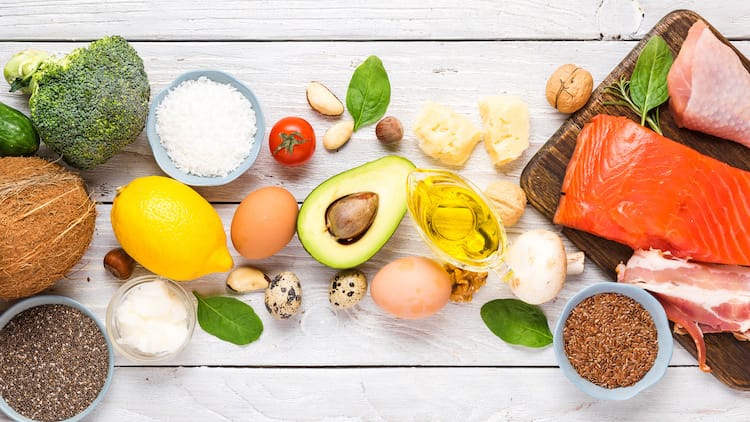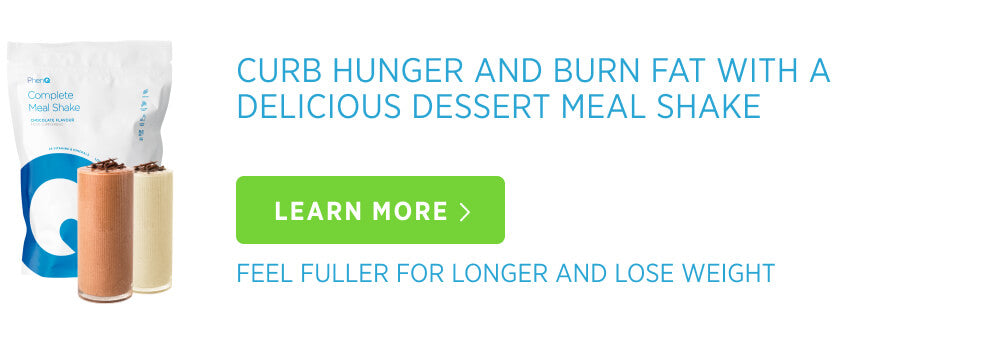The slow carb diet, which was pioneered by Tim Ferris in 2010, is a bit different than the standard low-carb diet that many people engage in by simply trying to cut carbs out of their diet.
Carbs are useful nutrients, and anyone who knows about them will know that they’re pretty useful and that they have an important function in our diet. While the slow-carb diet doesn’t endorse the consumption of carbs regularly, the diet does allow for a ‘cheat day.’
The idea behind this is that having one day in which you can eat anything you want helps to encourage your body’s metabolism to stay in shape. This prevents it from slowing down, which would ultimately make it harder to lose weight.
There are also other factors involved in the ‘diet plan’ that influence your weight loss. Ferris recommends that the diet be combined with exercise and supplementation – both of which can drastically reduce weight and improve overall health on their own.
In this article, we’ll talk about whether or not there is any point in participating in a slow carb diet, or if you can better pick another diet.
What is Tim Ferris’s Slow Carb Diet?
In a day and age where people are starting to think that all carbs are bad (which, by the way, they aren’t – the problem isn’t that carbs are bad, it’s that most mass-produced foods contain heavily refined carbs that provide no nutritional benefit), there are lots of different low-carb diet options out there.
One of the more popular diets is the Tim Ferriss Slow Carb Diet. This diet is fairly similar to the ketogenic diet, however, Tim Ferriss – the man behind the diet – recommends that you also pursue exercise and supplementation to fully find any benefit.
There are 5 basic rules to the Slow Carb Diet, which we will discuss in detail later in the article. The main difference between this diet and other similar ones is that it allows for a cheat day, which allegedly keeps your metabolism in a more active state, encouraging the body to burn more calories.
Tim Ferriss built this diet around the principle of MED – the minimum effective dose – meaning that he wants people to experience the most significant improvement with the least amount of effort.
The basics involve eating food from a set list of low-carb foods for 6 days of the week and eating anything that you want on day 7. Try to avoid eating more than 4 meals a day (a good idea for healthy living regardless of what diet you’re on) and take some dietary supplements to help enhance the effects of the diet and exercise.

Who is Tim Ferris and why should you listen to him?
Tim Ferriss was a senior at Princeton University before he was setback by depression and other mental health issues that ultimately led to him contemplating suicide. He overcame his fears and worries, however, and has since gone on to do great work in the diet industry.
Is this reason enough to trust him? Not really. However, the fact that he is so open about his struggles with mental health is a good indicator that he’s at least honest. Honesty is a valuable trait in any entrepreneur.
Tim Ferriss, the creator of the diet, wrote the book known as The 4-Hour Body. He believes that his Slow Carb Diet plan can be useful for helping people to shed pounds quickly. Depending on the cause of the person’s excessive weight, it certainly can.
In 2001, Tim first became well-known thanks to the development of his company known as BrainQuicken. The huge number of hours he was putting in at work these days (up to 90 hours a week) led him to decide that it must be possible to find a more time-effective way to incorporate good health and exercise into his daily routine.
This mindset led to the eventual culmination of his books and diet plan.
One of the best things about Tim’s diet is that he approaches it more holistically than some other diet plans. He believes that 3 separate factors need to be brought into balance before the diet can be considered effective:
- Exercise
- Diet
- Supplementation
Individually, these separate things can be useful for losing weight and improving overall health. However, when combined, they provide a surefire method for anyone to boost their health and shed extra pounds.
Rules of the Slow Carb Diet
There are five basic rules that you should follow if you’re on the slow carbs diet. These rules are:
1. Avoid White Carbs
This is generally a good rule to follow for anyone hoping to improve their overall health. White foods – most of which are processed, aside from a few vegetables like potatoes (which are still high in carbs and should be avoided) are usually rich in carbs. Things made from flour, like pasta, bread, and cereal should be avoided at all costs.
2. Be Repetitive With Your Meals
Tim recommends that you look through the allowed foods and build a meal plan that adheres to these rules. Then, you should follow this meal plan, eating the same meals every day.
3. Don’t Drink Too Many Calories
If you’re on any sort of diet, you’re going to want to minimize the number of calories that you drink. This means restricting yourself from drinking too much juice, milk, or other high-calorie drinks. These drinks are generally low in nutrients, high in calories, and not fantastic for anyone hoping to lose weight.
Instead, focus on remaining hydrated by drinking lots of water. You’ll thank yourself for it.
4. Avoid Fruit
Fruits may be rich in nutrients and extremely good for your overall health, you should avoid them if you want to follow the Slow Carb Diet plan properly. Fruit sugar can slow down the rate at which you lose weight.
5. Take One Day Off Weekly (a Cheat Day)
On the last day of your week, you’re allowed to eat whatever you dang well please. The idea behind this is that it keeps your metabolism operating in full-force. Sometimes, low-carb diets can slow down the metabolism, counteracting the enhanced weight loss that they would otherwise provide.
Slow Carb Diet foods list
The Slow Carb Diet has one of the most restrictive food lists out of any diet. Truth be told, it’s hard to imagine how anyone could follow this diet without becoming deficient in some nutrients.
Regardless, the reasoning behind this is that people become more likely to lose sight of their diet plan when they have too much freedom to choose from a variety of foods.
The foods allowed on this diet are broken into five categories: protein, legumes, vegetables, fats, and spices.
- Protein
Eggs, chicken (breasts and thighs), grass-fed beef, fish, pork, and lactose-free whey protein.
- Legumes
Lentils, black beans, pinto beans, red beans, soybeans.
- Vegetables
Spinach, cruciferous veggies (broccoli, cabbage, cauliflower, etc), sauerkraut, kimchi, asparagus, peas, and green beans.
- Fats
Butter and ghee, olive oil, grapeseed oil, macadamia oil, nuts, and dairy-free cream.
- Spices
Salt, garlic salt, white truffle sea salt, herbal spices (rosemary, thyme, oregano, etc.).
Foods you must avoid
Logic would dictate that any foods not on the ‘allowed’ list would thus want to be avoided, however, Tim still recommends several foods that should be avoided at all costs. These include:
- Fruits
One of the rules of the diet is to avoid fruits.
- Dairy
Dairy might have a low G.I., but dairy can lead to increased insulin levels which can hamper weight loss. The insulin spike is comparable to that which you might experience when eating white bread.
- Fried food
Since the diet recommends using macadamia oil and grapeseed oil for cooking (i.e. frying) foods, one might assume that this refers to restaurant-bought, deep-fried foods. Fried foods are low in nutrients, high in calories, and many fried foods are breaded.
The idea behind a Cheat Day
One of the most important aspects of the cheat day is the fact that it provides comfort. Many people become overwhelmed when they start a new diet plan, which can lead them to lose sight of their goals.
Tim also suggests that having one day to eat whatever you want would help to keep your metabolism in a high state. Eating low carbs every day would eventually lead to your body adapting and reducing its metabolic rate, thus causing you to burn fewer calories.
Cheat days, also known as refeeds, have been shown (in certain cases) to help accelerate weight loss.
Supplements recommended with this diet plan
Several supplements are recommended for use along with the Slow Carb Diet plan. Some of the most effective are:
- Electrolyte supplements
Low carb diets can cause the body to flush out water from the body. This can lead to electrolyte imbalances which should be replenished by taking supplements. Consider taking potassium, magnesium, and calcium supplements.
99mg of potassium should be taken with each meal; 400 mg of magnesium should be taken during the day, and 1,000 mg of calcium should be taken daily.
- Alpha-lipoic acid
A powerful antioxidant acid that has been shown to help accelerate weight loss. Doses of 100-300 mg are effective for this purpose.
- Garlic extract
This helps boost metabolism. Taken in doses of at least 200 mg.
- Green tea flavonoids
Which can further help to enhance metabolism and weight loss. Find a supplement that contains at least 325 mg of EGCG – this nutrient is the most powerful antioxidant found in green tea, and helps the body burn calories.
- Policosanol
An alcohol extract of various plant waxes that are found in things like sugarcane and beeswax. Policosanol should be taken in doses of 20-25 mg daily.
Eating out while on this diet
Eating out on the Slow Carb Diet can be difficult, but not impossible. There are a couple of things to keep in mind.
- Avoid deep-fried and breaded foods. Breaded foods are high in refined carbs, and deep-fried foods are high in calories and low in nutrients.
- Try to replace any carbs that you’d have in your meals with vegetables or beans/legumes.
Here are a few examples of foods that you could order at a restaurant while sticking to your diet:
- A burrito bowl with extra vegetables or beans instead of rice
- Thai curries, with extra veggies instead of rice
- Salads free from cheese and croutons
- Indian foods such as dals, curries without rice, aloo gobi, etc. without naan bread
Slow Carb Diet results, benefits, and dangers
There’s no doubt that you can get some impressive results. These are some of the benefits:
- A protein-rich breakfast can help enhance weight loss
- The diet provides many proven techniques for improving metabolism
- It can help people with diabetes regulate their blood sugar
- Much like the keto diet, the Slow Carb Diet forces your body to burn fat as a primary energy source, increasing weight loss.
There are, however, some risks and drawbacks to this type of diet plan.
- The decrease in meal frequency could lead to energy deficits
- Since the diet forbids the consumption of so many fruits and veggies, you could become nutritionally deficient
- The lack of fiber from fruits and veggies can cause constipation and problems excreting waste products like bile
- High levels of water excretion could lead to electrolyte imbalances
Slow Carb Diet recipes
Breakfast
Ideally, a good breakfast for someone will provide them with 30 grams of protein and be consumed within half an hour of waking up. Here are a couple of examples:
- A smoothie with 30 grams of lactose-free whey protein
- 2 eggs and half a cup of beans with salsa and guacamole
- 3 eggs with a serving of broccoli frittata
While the plan recommends eating the same meals in repetition, you will want to avoid eating 2-3 eggs every day. 12-18 eggs every week could be bad news.
Lunch or Dinner
One of the best ways to maintain your repetition is to make large amounts of food and simply save some of your leftovers.
- Roasted chicken and veggies
- Lentil stew with hearty vegetables
- Grilled vegetables cooked with beans and ghee
- Vegetable-based curry with a pulse (lentils, beans)
- Grilled fish with baked vegetables
- Mix-bean chili with a side of vegetables
Conclusion
The Slow Carb Diet, created by Tim Ferris, has a lot of fans. There’s no doubt that it can lead to weight loss, and that it can provide some health benefits – especially for obese people and diabetics.
If you’re aware of the potential drawbacks and are ready to give it a try, then good luck!




